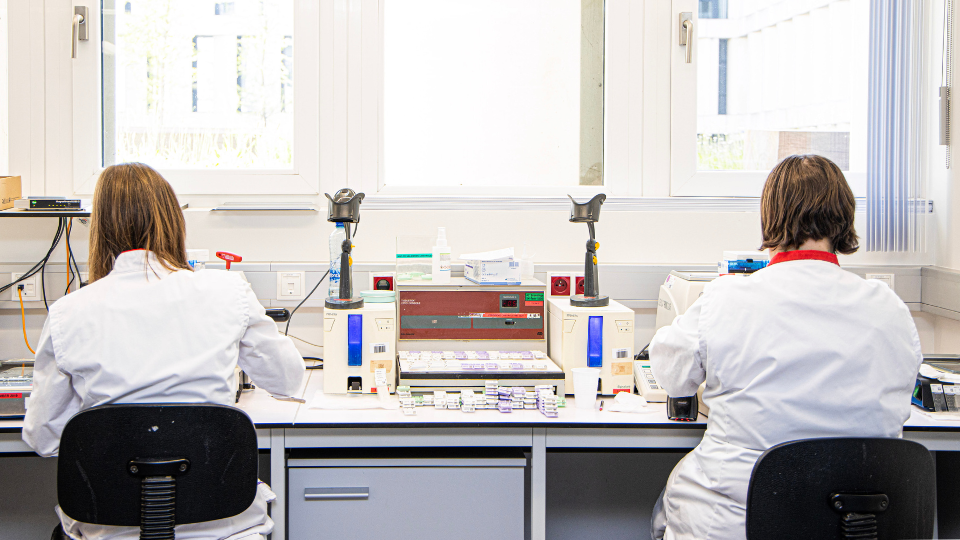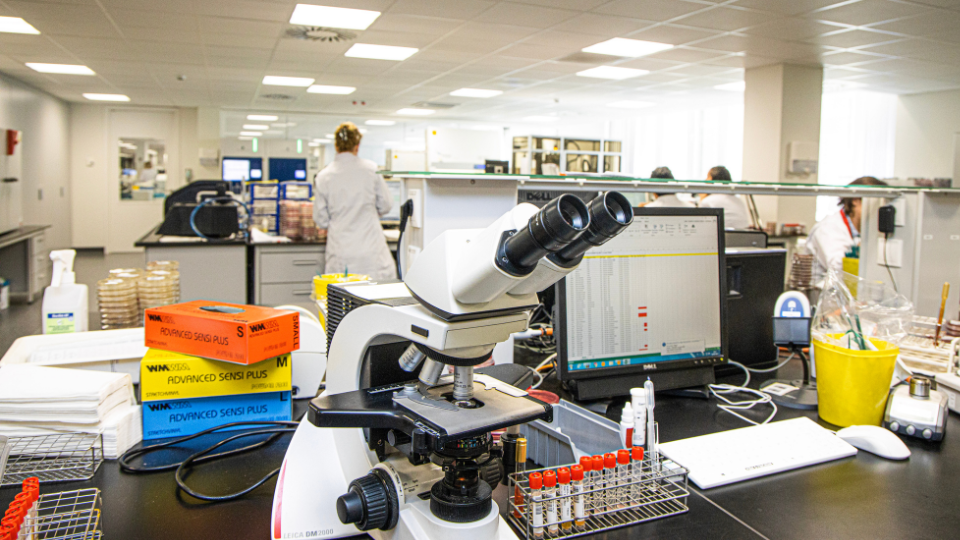Ready for the future with GLIMS 10
Merged laboratories of AZ Groeninge and Sint-Jozef Izegem implement a single, central LIS environment
The hospitals of the Belgian E17 network are working together more and more intensively with the aim of developing
Upgrade from GLIMS 8 to GLIMS 9
When the discussions with the Sint-Jozefskliniek started, the AZ Groeninge laboratory had just completed an ambitious transition from GLIMS 8 to GLIMS 9. “The upgrade was an excellent opportunity to rethink our entire operation and processes,” says Liselotte Coorevits, clinical biologist at AZ Groeninge. “So we started with a completely empty box, and redesigned our GLIMS environment from the ground up.”
“Taking this approach obviously requires manpower and time, both for the biomedical scientists and IT staff. In addition to the configuration, there are the equally important analysis, thinking, consultation and communication with the people on the work floor. And, once you start building, you can’t go back.” However, the end-result of this exercise is impressive: a well-functioning GLIMS environment that is ready for the future.
Merger with Sint-Jozefskliniek

During that time, the merger plans with the Sint-Jozefskliniek laboratory were gradually taking shape. “For us, it was an obvious choice to graft the laboratory in Izegem, which was still working with GLIMS 8, onto our system. Our colleagues in Izegem were open to this idea, and to adopting the working method from Kortrijk.”
While the GLIMS configuration itself was not the most complex part of the project, there were nonetheless several challenges, especially organisationally. Liselotte: “The challenge wasn’t so much around adding stations, for example, but rather deduplicating the processes running in the background. For example:
- Even as one central laboratory, we still need to send invoices to our local patients from each laboratory location.
- Izegem and Kortrijk each have their own order entry process.
- Depending on the hospital, doctors and patients have a different identification number; it was not easy to align the ADT flows.
- We wanted to continue building a clean database. That requires uniform naming and code harmonisation at all levels: domains, materials, tests, etc.
- Working in collaboration with all parties meant that we found solutions to all challenges that gradually crossed our path.”
The merger impacted just about all of the hospitals’ subsystems. In addition, it was necessary to upgrade to GLIMS 10 due to the LDAP authentication that needed to support multiple domains.
Strong support
“We chose to do a lot ourselves, including the configuration. That way we would have the necessary knowledge in-house to make adjustments if necessary. But of course, none of this would have been possible without the strong support from Clinisys. They provided a comprehensive action plan for the entire project, and there were clear agreements at go-live. At that time, several people from Clinisys were also present in Izegem, where the switch was most extensive. This all contributed to the smoothness of both the merger and the associated migration,” says Liselotte.
Benefits of GLIMS 10

The biggest change from GLIMS 8 to GLIMS 10 is the completely different user interface. “You can configure buttons, ribbons and sidebars yourself, according to the user, making navigation much faster. It’s an absolute added value to work with, and the biologists and staff could no longer do without this feature,” Liselotte says.
GLIMS 10 offers some other important innovations. These include support for LOINC coding, which guarantees a
In addition, GLIMS 10 leaves nothing to chance in terms of patient data security, with transparent data encryption of the laboratory database and LDAP authentication for hospitals that centrally manage user rights.
“We are also happy with the consultation registration module, which allows us to keep track of our consultations in a structured manner. Because we are evolving from technical to intellectual performances, it is expected that this will eventually be legislated. This is why we want to already jump on the train now,” concludes Liselotte.
Tips from Liselotte for a successful merger/upgrade:
– Allow sufficient time, both for the biologists who focus on the professional, clinical aspect, and for the IT specialists who know the underlying IT processes and the hospital’s subsystems and databases, inside and out.
– Ensure sufficient moments of consultation and transparent communication. This helps to ensure your decisions are supported. And because you know who is doing what, you can respond quickly in the event of a problem or error.
– Carefully prepare the go-live, with a clear division of tasks. In our laboratory, the biologists manned the hotline, assigned an urgency level to the issues, and then ensured that everything was resolved correctly. This allowed the IT people to keep their hands free, to establish the connections and guide the people on the work floor.

Compared to GLIMS 8, in GLIMS 10 you can configure buttons, ribbons and sidebars yourself, according to the user, making navigation much faster. It’s an absolute added value to work with, and the biologists and staff could no longer do without this feature.
Related content
Clinisys GLIMS
Our Laboratory Information System, GLIMS, provides a single solution for all mainstream laboratory disciplines, as well as for genetics.
Clinisys GLIMS 10
By upgrading to the new GLIMS 10, you can now benefit from additional
features, modules and architecture carefully designed to meet the needs
of today’s laboratory.
AZ Alma
How expert project management ensured the hospital’s complex, large-scale GLIMS implementation got off the ground with no problem.